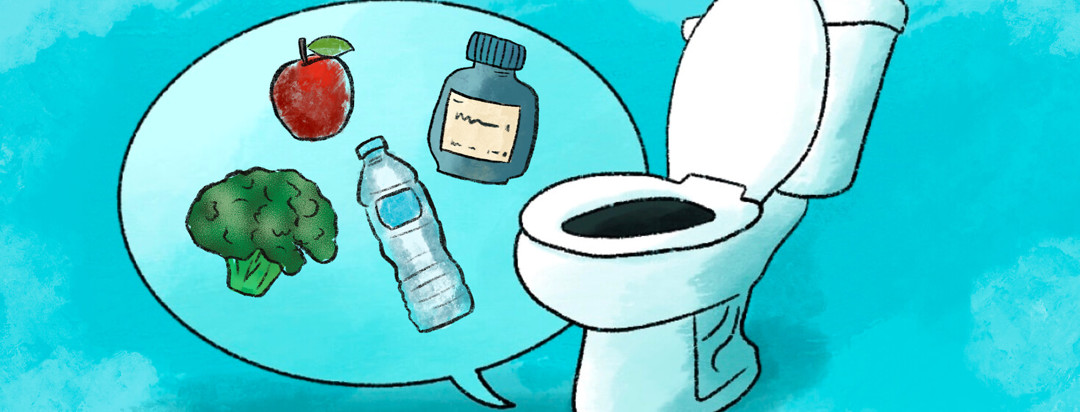Urinary Incontinence in People with Parkinson’s Disease: Part 1
“Incontinence Hotline...Can you please hold?"
Lately, I have seen television ads for bladder control medications that are proudly showing some woman roaming around with a nagging bladder always bugging her. I think it is about time that I wrote an article about the subject of urinary urgency/incontinence in Parkinson’s disease. This article does NOT just apply to the women out there with Parkinson’s; it applies to the men as well!
Urinary Incontinence: A non-motor symptom of Parkinson's
While most people think of Parkinson’s disease as a motor disease, it is also a neurodegenerative disease affects the CNS (central nervous system) and the ability for the messages from the brain to get to the muscles and nerves. While the motor issues of PD are well known, the non-motor issues are often overlooked - including urinary incontinence.
What happens to someone who has urinary incontinence?
The pelvic floor consists of a hammock of muscles, ligaments, and connective tissue, which covers the bottom of the pelvic cavity and assists in supporting the abdominal and pelvic organs. The pelvic floor maintains continence of bowel and bladder and plays an important role in sexual function.
The pelvic floor muscle consists of three layers and has fast and slow-twitch fibers to assist with support and sphincter properties. The muscle is the same in women and men and both sexes benefit from maintaining good strength and tone of the pelvic floor muscle.
As we age and with certain diseases such as PD our muscles become weak and the signals do not always tell the muscles to tighten up when they need too. Add a few pounds to the belly region also and you have the perfect storm for “Peezing,” “Peelaughing”, as well as a host of other words for embarrassing moments due to urinary incontinence or urgency!
What medications help to treat urinary incontinence?
So back to the TV ads for urinary incontinence that have us adding MORE medication to our already full medication bag; here are many medications that can help this problem. Medications include:
- Oxybutynin (Ditropan®)
- Tolterodine (Detrol®)
- Trospium (Sanctura®)
- Tofenacin succinate (VESIcare®)
- Darifenacin (Enables®)
- Mirabegron (Moretti®)
- Phenoperidine fumarate (Toviaz®)
Do we really want to add that medication to the already growing list to our medications? The answer is YES!
Alternative treatments for urinary incontinence
Some alternative treatments could hold off the need for added medications. According to an article from the Parkinson’s Foundation, there are some great tips. I added a few of my own to their list.
Make changes to diet & lifestyle
- Healthy and balanced diet means a happy bladder and bowels!
- A diet rich in veggies and fruits always helps with clean living.
- I have found that a diet rich in organic foods with less processed foods helps too.
- We get dehydrated easily! Drink fluids! Gatorade and water are great!!
- Alcohol, soda, and caffeine can irritate the bladder, so I try to drink those sparingly.
Establish routines
- Remember to "go" before it is too late.
- If you go after ever meal that is a good choice!
- Schedule is a big thing for medications as well food and other routines.
- If you have issues with accidents at night limit how much you drink right before bedtime.
- Since we have issues with emptying our bladder, go first thing when you get up in the morning. Stand up, then sit back down, and see if you can go some more or just wait and try after breakfast. Repeat before bedtime.
Wear appropriate clothing
- Buy clothing that is easily removed.
- Velcro can be our best friend! If you need to find some adaptive clothing Silverts is moderately priced.
Modify the bathroom
- Adaptations in the home to help those with mobility or balance issues can help as well. Options include handrails, toilet frames, or adjusting the height on the toilet seat.
- Another idea is purchasing a “Squatty Potty." It is a stool that you put your feet on to open up the area to help with easier bowel movements, but I have found it also helps with bladder emptying issues!
Invest in continence products
Many products available can help the person to feel independent and comfortable. They will also protect clothing and furniture. These include:
- "PEE PEE Pads" or underwear for incontinence.
- Male continence sheath – these can be worn over the penis, attaching to a leg bag. These are very helpful at night.
- Bed pads and mattress pads can help to keep you from doing laundry all the time!
What's next for those suffering from urinary incontinence?
I decided I did not want to add another medication to the medicine bag. I was trying to see if there was something I could do besides resigning myself to wearing pads or some other incontinence protection all the time. At 53 years old, I wanted to see if there was a way I could help myself.
Part 2 of this article will address my experiences. I plan to discuss what I lovingly refer to as "PEE PEE PT" - physical therapy to help treat urinary incontinence.

Join the conversation